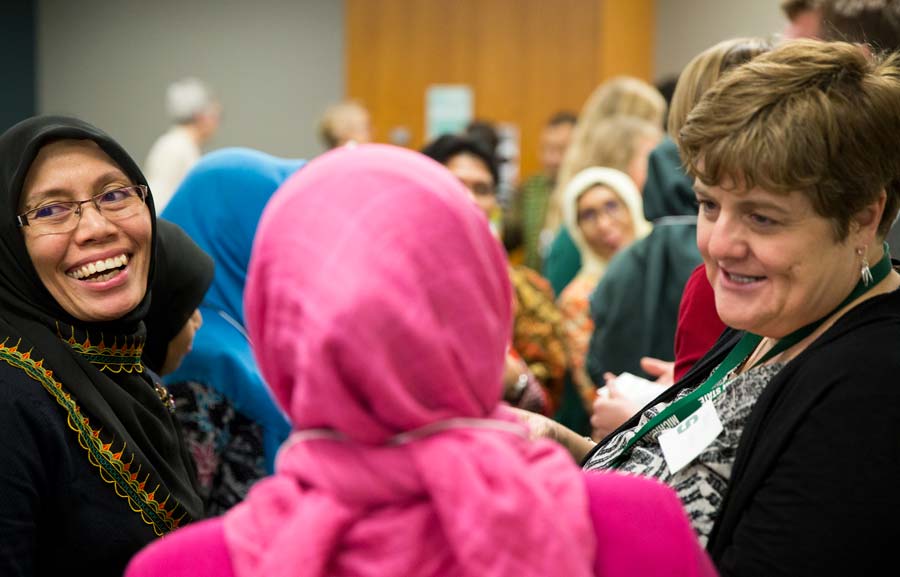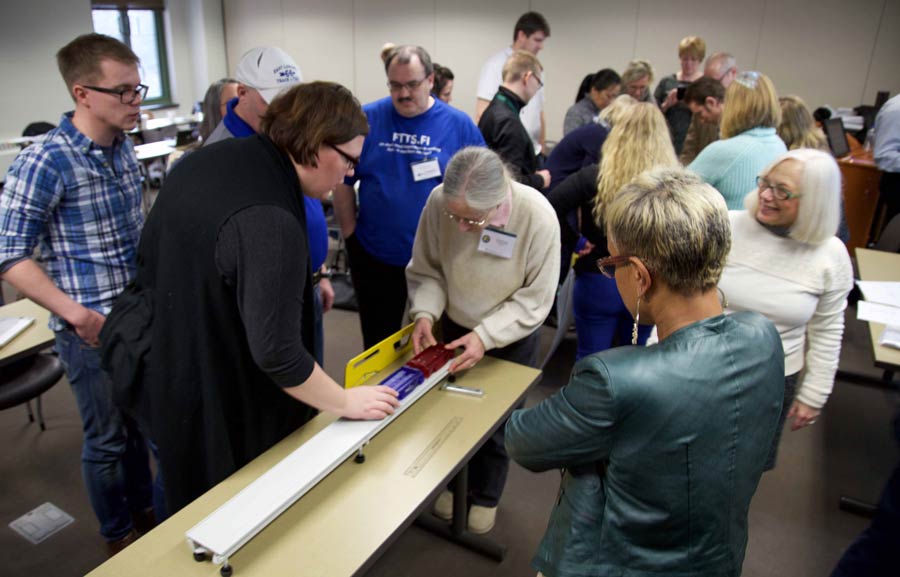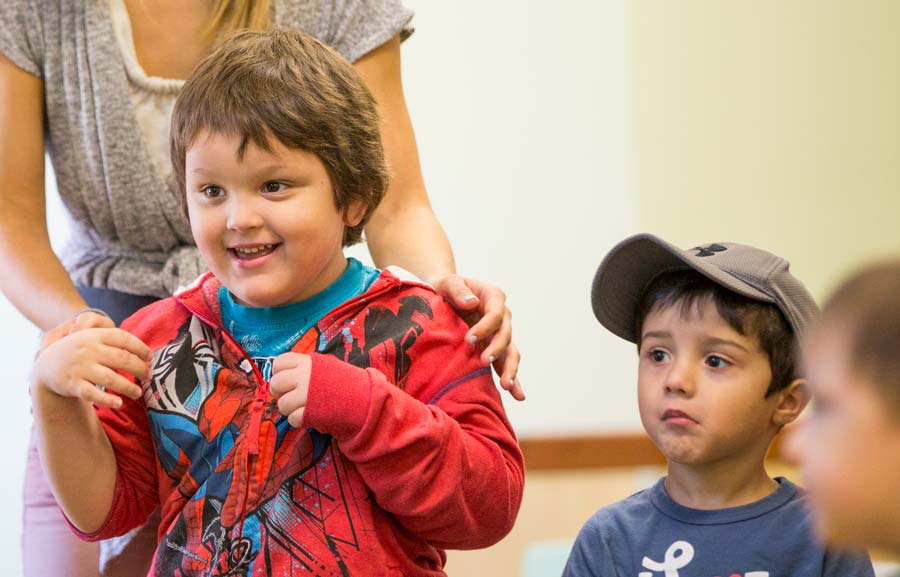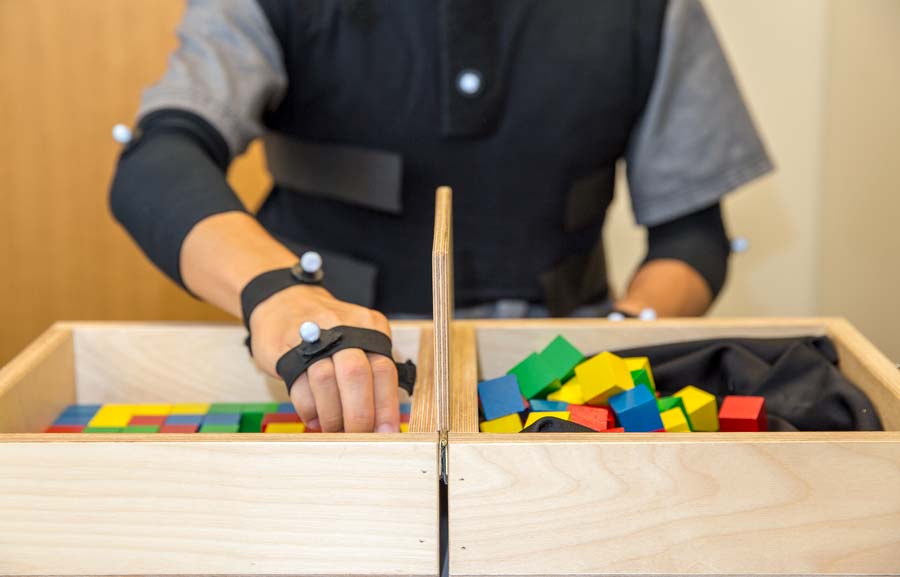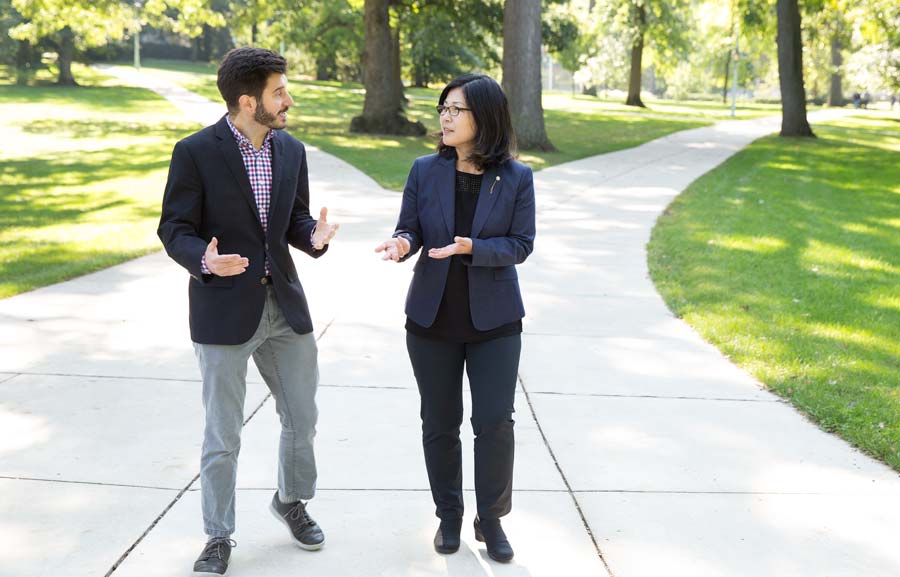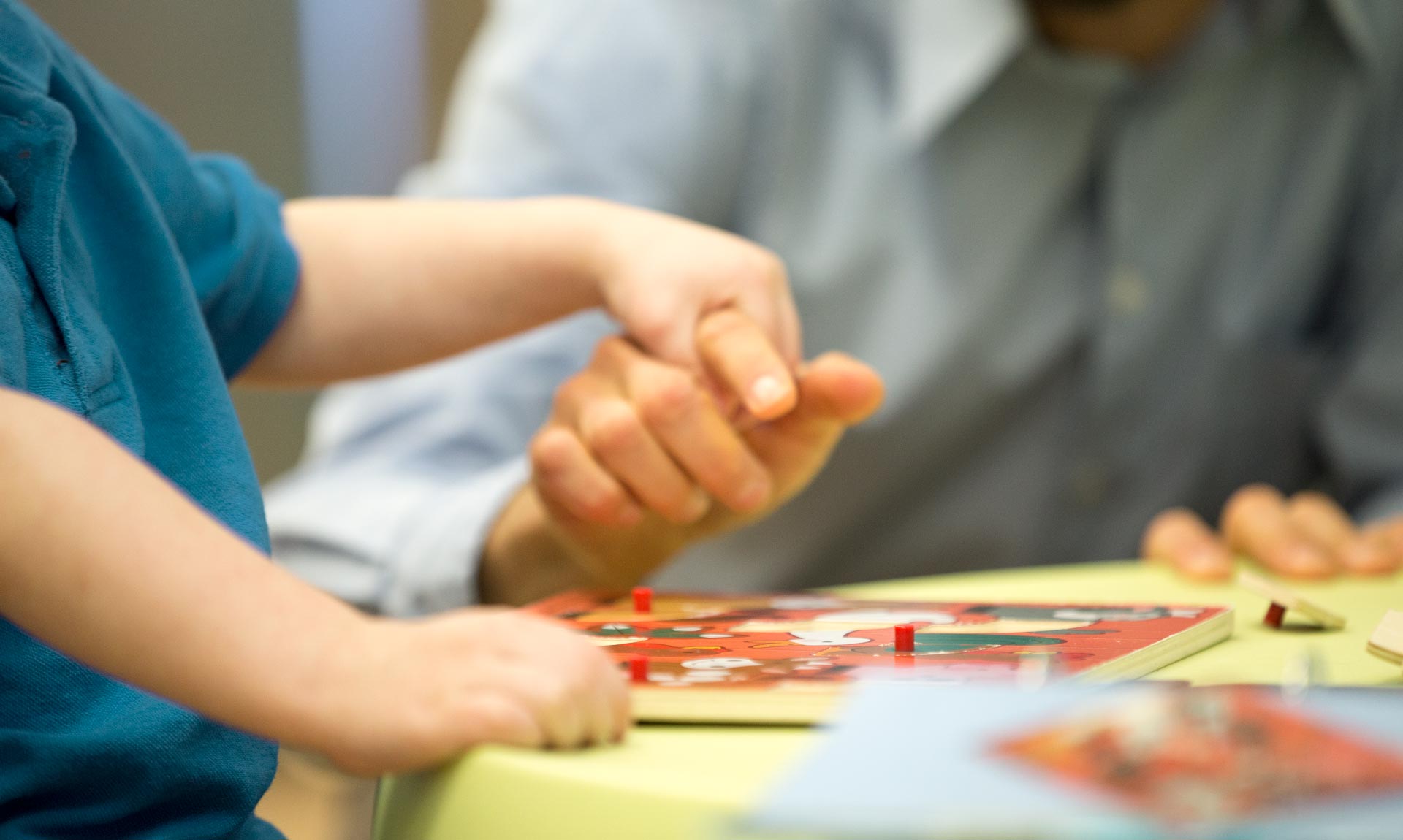
Last year, scholars across Michigan State University gathered to launch an innovative educational program to teach young children with autism. It was another step in the many ways that MSU is working to improve the lives of those with autism—and it took action from some of the earliest stages in a child’s life.
The Early Learning Institute (ELI) was created for 2- to 5-year-old children with autism spectrum disorders (ASD). It uses a unique combination of one-to-one training sessions and classroom experiences with peers to help best prepare young children for their next step in life: school.
The program is already showing early signs of success, and is expanding because of it: A second branch of ELI opened this fall.
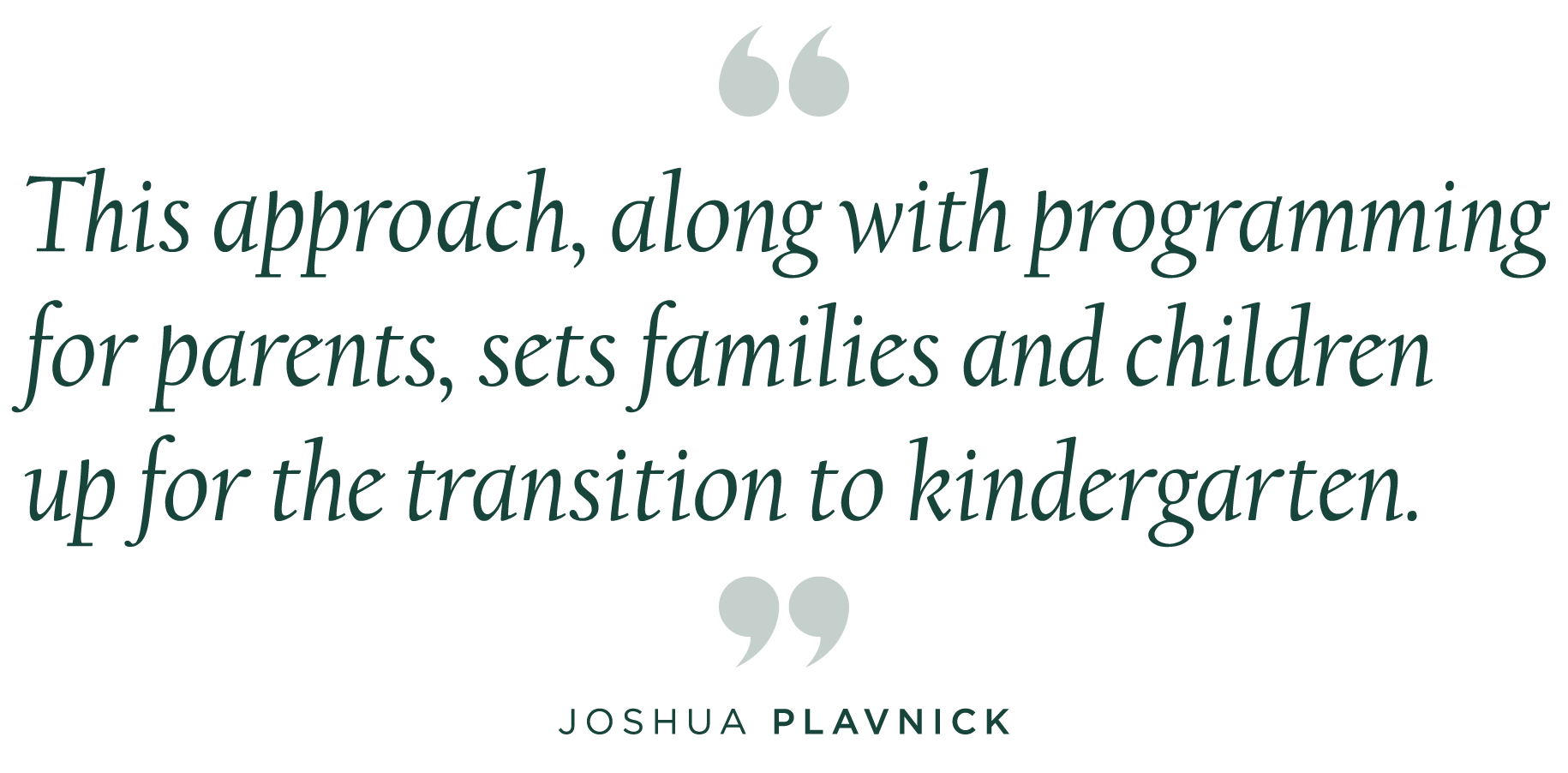 “ELI emphasizes a step-by-step approach to early intervention across several environments,” said Joshua Plavnick, associate professor of special education and director for the institute. Plavnick worked to create and implement the program alongside other faculty members from the MSU College of Education and the College of Social Science.
“ELI emphasizes a step-by-step approach to early intervention across several environments,” said Joshua Plavnick, associate professor of special education and director for the institute. Plavnick worked to create and implement the program alongside other faculty members from the MSU College of Education and the College of Social Science.
“Half of [the kids’] day is spent in one-on-one, intensive behavioral therapy, which will help children learn skills by catering the teaching to them,” Plavnick continued. “In the other half of the day, children learn social interaction skills with and from their peers in an inclusive setting. This approach, along with programming for parents, sets families and children up for the transition to kindergarten.”
The curriculum is individually created to suit the needs of each child.
Children are assessed in areas such as language, social abilities, observational learning and academic readiness skills. Then, specialists develop and implement an individualized treatment plan for each child to address core deficit areas relative to their similarly aged peers.
In addition, ELI provides training for future applied behavior analysts (ABA), researchers and teachers, giving them space to practice what they have learned with the children in both settings.
Laurie Linscott, co-director at ELI explained: “It’s exciting because we’re training the next generation of teachers and ABA therapists who will use these best practices in schools, and we’re also modeling a unique program that can have a great impact when replicated around the country.”
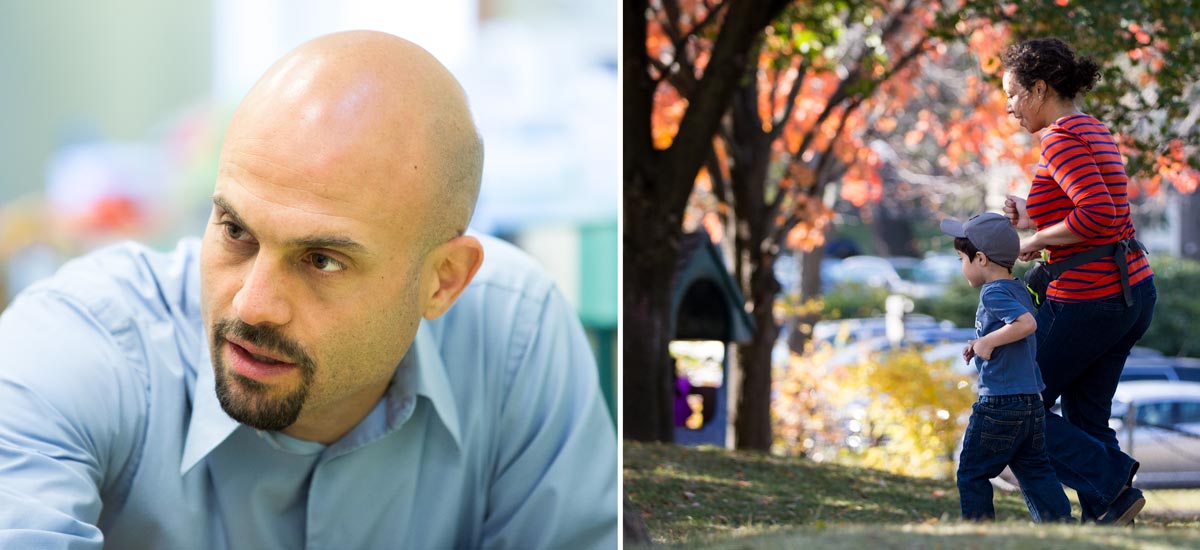
(L) Joshua Plavnick, associate professor and director of the Early Learning Institute.
(R) Students in the Early Learning Institute spend half of their day in one-on-one sessions with trained specialists.
Opening new doors
Complementing the initial branch of the Early Learning Institute—located at the renowned Child Development Laboratories (CDL) Central School, 325 W. Grand River in East Lansing—the second branch has the same programming, but different features. The new ELI is located at 1107 E. Grand River in Lansing.
Both branches feature spacious, inclusive classrooms stocked with learning materials, and rooms with tables, chairs and soothing colors where children and specialists can work on skills alone. Each room has several behavior technicians and teachers watching, playing with and interacting with the children to help them learn and grow.
At the first location, the rooms are also equipped with observational areas where specialists can watch and listen to the children and take notes on their behavior. Additionally, the CDL has a video observation room with computer monitors where specialists can watch camera footage from the classroom to review interventions used with any particular child.
“This helps ELI constantly adapt to the child’s needs and tweak the education and interventions as needed,” added Linscott. “The observational rooms, cameras in the classrooms and interaction with the children will provide hands-on training for the service professionals.”
The second branch is more of an “old-fashioned classroom,” as described by Plavnick.
“One of the benefits of the new set-up is that this is one step closer to how this program would look in the greater community, without all the same affordances provided by being on campus,” he said.
Each location currently serves eight children ages 2-5 with ASD and their families.
Video: Michigan State University Alumni Association
Promising results
Even though ELI just completed its first full year, Plavnick says data show the innovative approach to schooling is working.
“Based on our behavioral observation data, we have seen great improvement in children,” he said. “They talk more, interact more with others and are able to complete many more tasks independently than compared to the beginning of August 2015.”
It is just the beginning of ELIs impact on the local—and possibly national—community.
Plavnick and others at the institute are pursuing other locations through MSU Extension programs and public school districts.
“I believe we are just starting to make a community impact, as local school districts have been in contact with us about collaborating on an expansion of the ELI model to support ASD programming in school settings,” Plavnick said. “We have also gotten excellent feedback from families and community partners about the quality of our program. The goal is for community impact to be an area that grows substantially in the coming year.”
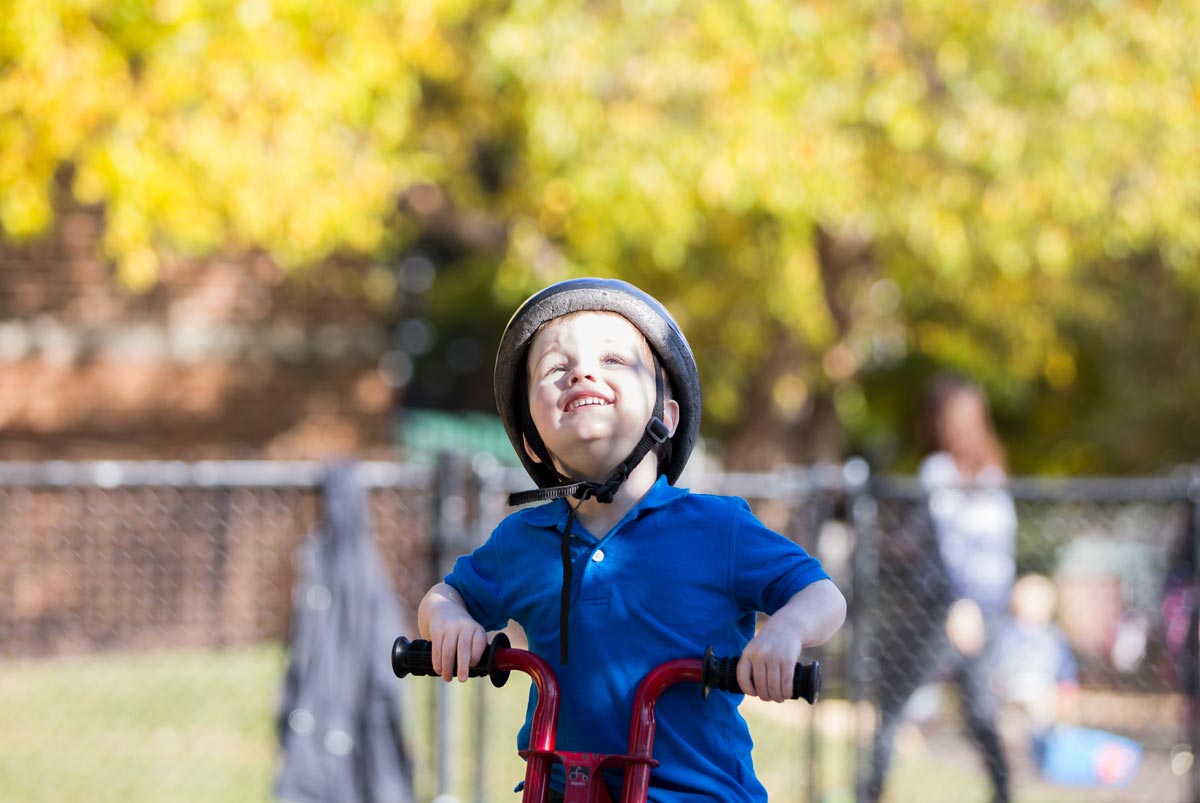
Play is an integral part of the learning experience at the Early Learning Institute.
Giving thanks
The newest branch of the Early Learning Institute is partnered with Capital Area Community Services, Inc. Head Start, in addition to continuing previous partnerships with the MSU College of Education, the MSU College of Social Science and the Community Mental Health Authority of Clinton, Eaton and Ingham Counties.
Funding comes from the Michigan Department of Health and Human Services, MSU’s program for Research in Autism, Intellectual and Neurodevelopmental Disabilities (RAIND) and Kathryn and Michael Bosco.




